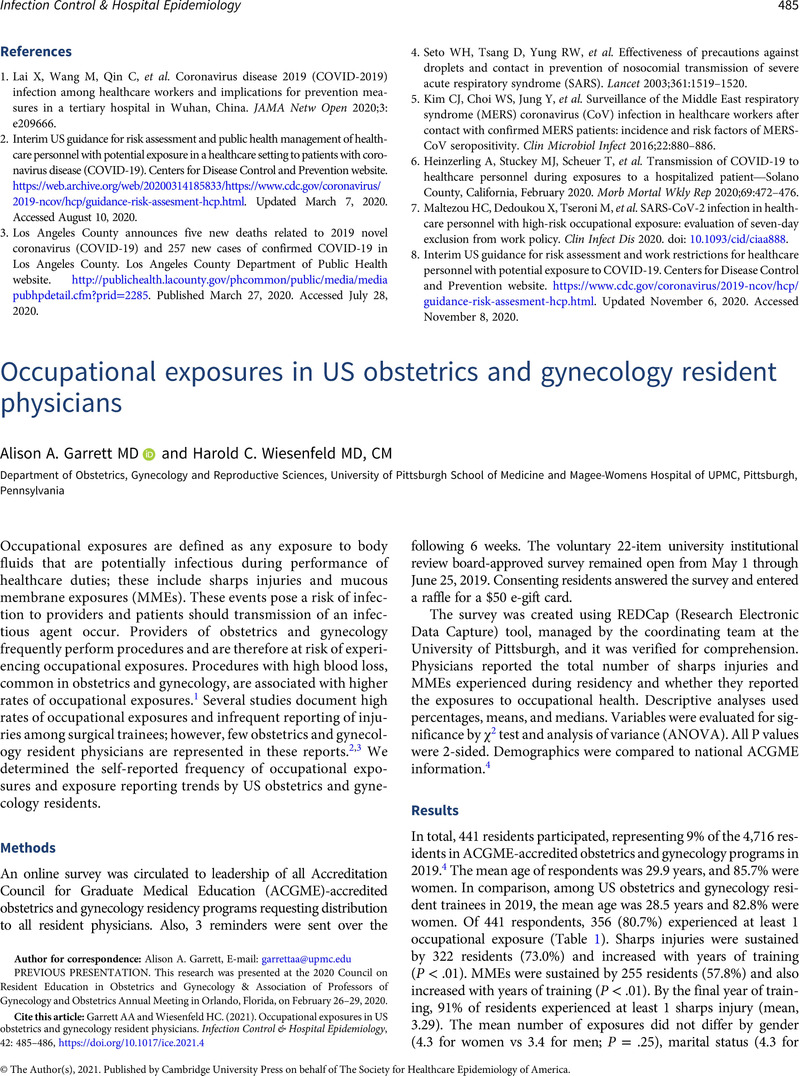No CrossRef data available.
Article contents
Occupational exposures in US obstetrics and gynecology resident physicians
Published online by Cambridge University Press: 11 February 2021
Abstract

- Type
- Research Brief
- Information
- Copyright
- © The Author(s), 2021. Published by Cambridge University Press on behalf of The Society for Healthcare Epidemiology of America
Footnotes
PREVIOUS PRESENTATION. This research was presented at the 2020 Council on Resident Education in Obstetrics and Gynecology & Association of Professors of Gynecology and Obstetrics Annual Meeting in Orlando, Florida, on February 26–29, 2020.





